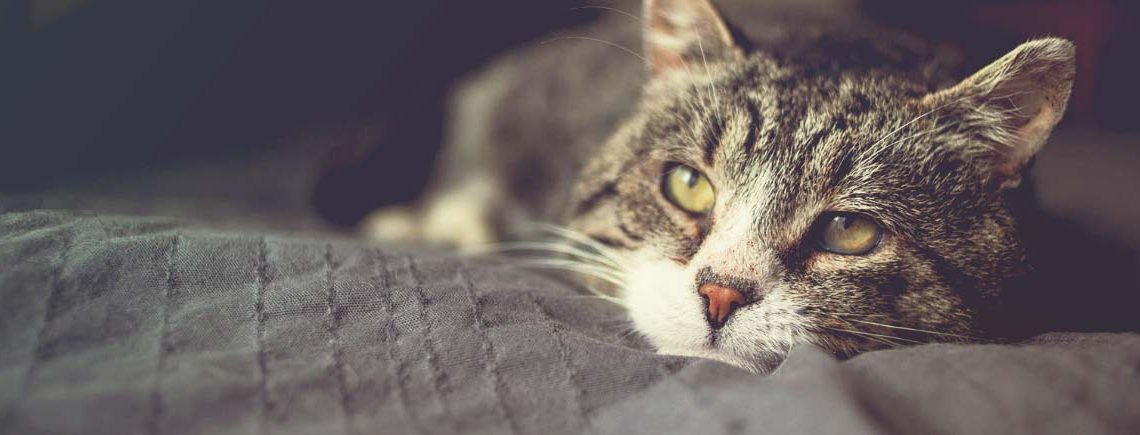Caring For Your Older Cat’s Joints & Muscles
As cats grow older, it’s common for many of them to develop muscle and joint problems, such as arthritis. Your cat may seem stiffer than usual, or is having a hard time moving around. It can be tough to accept our once bouncy kitten is getting older, but fortunately, there are many ways you as a pet parent can help make your aging feline friend.
Here, we’ve put together a helpful guide on what you can do to help your older cat’s joints and muscles and make their senior years as comfortable as can be.
Muscle Change in Aging Cats
Cats tend to lose muscle mass and tone as they age, making movement more difficult, which can lead to even more muscle loss. Exercising your older cat is important for the health of the muscles, as well as the heart, digestive system and of course, their attitude. Nutrition is also an extremely important factor in maintaining muscle mass; as cats get older, their nutritional needs change, and if diet does not meet their requirements, they will lose muscle mass. When petting them, you may find you can easily feel the bones of their spine and hips as a result of this muscle loss.
Joint Disorders in Older Cats
Over time, the joint cartilage in freely moving joints can degenerate, resulting in loss of joint movement and often, pain. This is common in older cats but it may not be noticed because cats often conceal any signs of discomfort or illness.
The most common form of arthritis in cats is called osteoarthritis or degenerative joint disease. Usually, joints form smooth connections between bones, but in the case of osteoarthritis, that smooth surface on the end of a bone is turned into a worn down, poorly gliding surface, where bones grind against each other.
Symptoms of Arthritis
If you notice any of the below, we recommend consulting with your local vet for the best course of treatment.
Symptoms of arthritis in cats include:
- Reluctance to jump up or down
- Trouble going up or down stairs
- Limping
- Stiffness in the legs (particularly after resting or sleeping)
- Struggling to use or get in their litter box
- Irritability/attitude change
- Reduced energy levels
- Reduced grooming habits
- Reduced height when jumping
- Hiding or sleeping more than usual

Taking Care of Cats with Muscle and Joint Problems
1.Good Bed
A good bed is essential for older cats who are suffering from muscle and joint issues. You want a bed with good support that will allow your cat to easily get in and out of. A good supportive bed with a cushioned base allows your cat to curl up and sleep, while also helping to support arthritic joints and cradle tired bones.
Make sure the bed you choose has a low entry point so your older cat isn’t struggling to get in.

2. Nutrition
While weight loss is a concern for senior cats, reduced mobility and activity levels can increase the risk of weight gain too. Weight gain in your senior cat can increase the risks of illness such as diabetes or kidney problems. We recommend selecting a cat food that has been especially formulated to cater for the dietary needs of an older cat. These will be developed to prevent weight gain, boost the immune system and aid your cats joints and mobility as she ages.
Often, dietary supplements can help aging cats suffering from joint problems. Glucosamine chondroitin supplements are one of the best treatments for early arthritis in cats. As cats age, the cartilage tends to wear thin because their bodies produce less glucosamine than they did when they were younger. This can lead to joint pain and stiffness, particularly in cold weather. The focus on joint health is what makes glucosamine supplements an ideal option for your ageing kitty.
Always speak with your vet before making any changes to your cat’s diet
3. Make it Convenient
Place essential resources such as food, water, litter boxes, and beds in multiple locations around the house where your cat can easily access them. If your cat is finding it difficult navigating up and down the stairs, make sure these resources are met on the bottom floor to save her the pain of going upstairs. Ensuring that all your cat’s needs are met in areas that are convenient for her will prevent any accidents in the house or risk of being unable to access important resources.
4. Grooming
Help your senior cat out with grooming by gently brushing or combing daily (especially if she’s long-haired), and keep nails from becoming overgrown with regular nail trims. Cat with joint problems may struggle to groom themselves, so it’s important to give your cat a helping hand to prevent mats, tangles, and overgrown nails. The nails of older arthritic cats sometimes overgrow into the paw pads, which can be very painful.
5. Regular Exercise
Regular exercise is an important element of a healthy life, especially as your cat begins to age. It aids balance, mobility, mental agility, and sustaining a healthy weight. There are many ways to get your senior cat active, such as with toys, scratchers, and puzzles. For more information on getting your cat active, see our blog post here.
6. Low-Entry Litter Box
Low-entry litter boxes will make it easier for senior cats to get in and out. If your cat is arthritic or has mobility issues, make sure the litter boxes are placed in easily accessible areas.
7. Massage
While grooming your kitty, why not try massage her too? Massage can increase a cat’s flexibility, circulation as well as making her happy and content.


